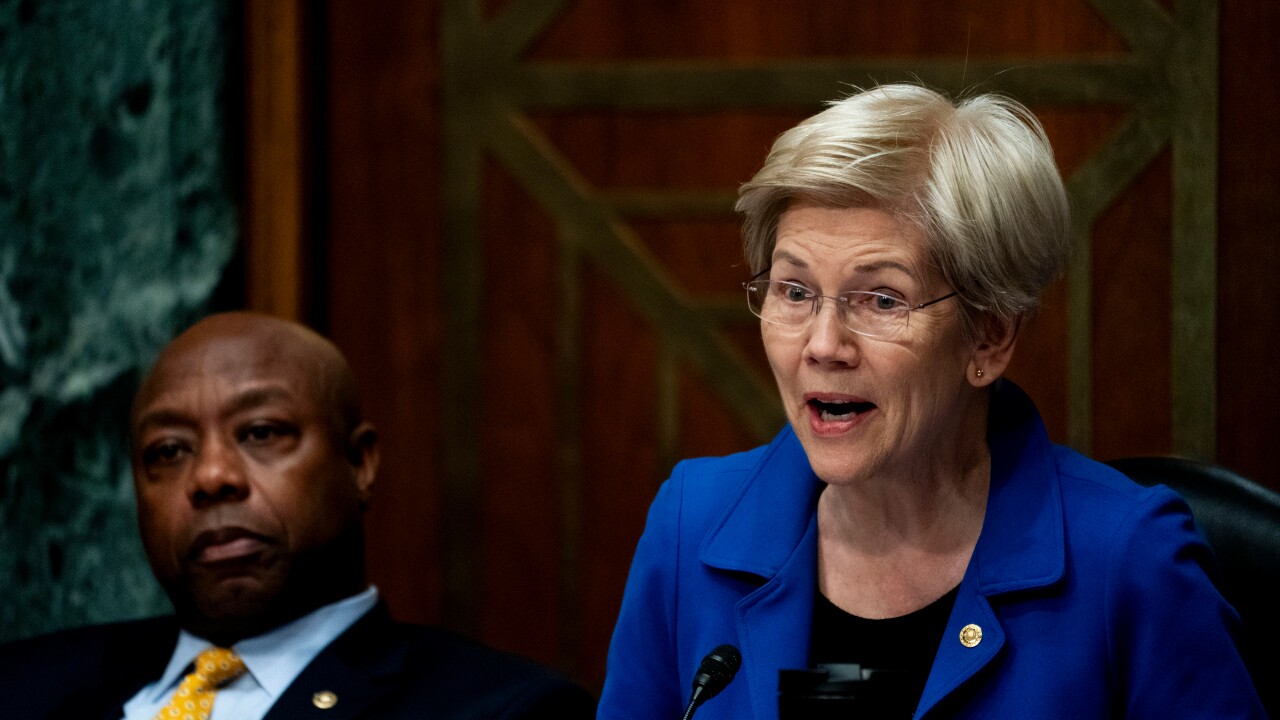WASHINGTON Regulators will field a barrage of questions about tough issues when they testify Wednesday before the Senate Banking Committee, but the panels growing interest in too big to fail is expected to pose the thorniest ones.
Concerns persist over too big to fail, which refers to the belief that the government will step in to rescue troubled financial institutions whose failure would damage the economy. It reared its head again during a congressional hearing last week, where Senate Banking Chairman Paul Sarbanes questioned a senior Federal Reserve Board official.
The Maryland Democrat is expected to question the bank and thrift regulators, including Fed Chairman Alan Greenspan, on the subject when they testify before the panel this week. Mr. Greenspan, Comptroller of the Currency John D. Hawke Jr., Office of Thrift Supervision Director Ellen Seidman, and outgoing Federal Deposit Insurance Corp. Chairman Donna Tanoue are scheduled to testify at an oversight hearing called by the new chairman.
This is a subject that probably needs further exploration, Sen. Sarbanes said. This may be a subject the committee wants to pursue with the regulators.
Some industry representatives have argued that the doctrine must be dealt with before deposit insurance reform can be properly debated or passed. Community bankers have long argued that the largest institutions have an unspoken competitive advantage because uninsured depositors there feel like they do not have to worry about the coverage level, as they think that in the event of a failure they would get all their money back. That is why many are so adamant in proposing a significant increase in the coverage level per account, in order to even the scales.
Those who are most strongly opposed to substantially increasing deposit insurance coverage levels are the most adamant in saying there is no too big to fail, said Kenneth A. Guenther, president and chief executive officer of the Independent Community Bankers of America. This issue is an integral component of deposit insurance reform.
The FDIC issued a series of recommendations on reform in April but did not tackle the systemic risk doctrine in it. The reform effort is also expected to be discussed by Ms. Tanoue and other regulators at the hearing Wednesday. Sources said other subjects up for debate could include predatory lending and privacy.
Sen. Sarbanes interest in too big to fail is not surprising, because he had indicated he wanted to examine the issue after the Gramm-Leach-Bliley Act passed in 1999. Now he has the power to act on it after the Democratic takeover of the Senate on June 6 gave him the chairmanship.
The Maryland lawmaker had not been expected to tackle the issue so early in his chairmanship, but it was the first question he asked Fed Vice Chairman Roger W. Ferguson Jr. at the central bank officials confirmation hearing Wednesday.
Sen. Sarbanes questioned repeated statements by central bank officials that no institution is too big to fail, and contrasted it with comments made by former Fed Vice Chairman Alan S. Blinder, who was recently quoted in American Banker as saying that everybody knows the doctrine is real. He also asked about the Feds role in the rescue of Long Term Capital Management, a large hedge fund that nearly failed in 1998, when the central bank organized a private-sector bailout something many skeptics see as a prime example of actions speaking louder than words.
In his response, Mr. Ferguson reiterated that no institution is too big to fail, and said that he saw the rescue of Long Term Capital as proof of that assertion, not a contradiction of it.
It strikes me as a case where an institution was large and in fact did get unwound in an orderly fashion, Mr. Ferguson testified. The management of Long Term Capital and many of its shareholders lost money. There was no Federal Reserve quid pro quo of any sort expressed at any time.
After the confirmation hearing, Sen. Sarbanes acknowledged that the issue was not his highest priority, but added that the doctrine is important to address before another crisis occurs.
Issues only get on the front burner when you run into trouble, and then everyone says, Why didnt we address this issue earlier so we didnt have this situation on our hands? Sen. Sarbanes said. Its an open area that we have to examine carefully.
But industry representatives disagree on what, if anything, Congress should do. Suggestions range from forcing banks to issue subordinated debt in order to promote market discipline, to enactment of a law that explicitly repudiates the doctrine.
Specifically, some former regulators argue that lawmakers should eliminate the systemic risk exception found in the Federal Deposit Insurance Corp. Improvement Act of 1991, which says that the Treasury secretary, after consulting with the President, could step in to rescue an institution if its failure could cause an economic meltdown.
My preference is to simply prohibit agencies from bailing out institutions, said William Isaac, chairman of Secura Group in Falls Church, Va., and a former FDIC chairman. If we want to bail someone out, whether it is Chrysler or a large bank or insurance company, it ought to take an act of Congress.
Mr. Isaac emphasized that the time to address the issue is now.
We dont have a crisis atmosphere and we can deal with it later may be too late, he said.
Other industry representatives are keeping their options open, but said that they supported efforts to resolve the issue once and for all.
Anything that Congress could do to move towards elimination of too big to fail would be strongly supported by the American Bankers Association, said Edward L. Yingling, the chief lobbyist for the trade group.
Michele Heller contributed to this article.





